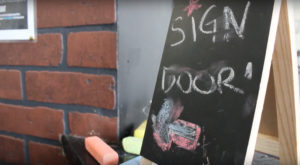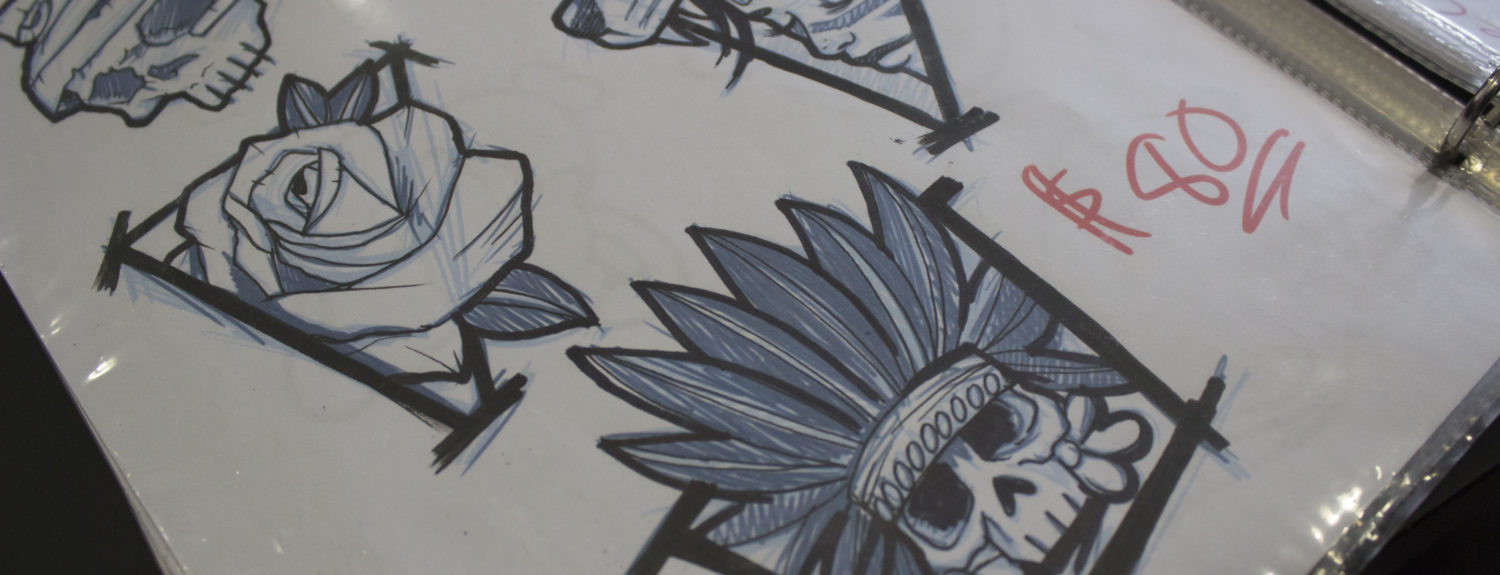Arts & Entertainment
A Tale of Two Tattoo Artists
By Kyah Blair
Spectrum staff
Lavan Wright …
Before he became one of the tattoo artists at Think Before You Ink in Jamaica, Queens, Lavan Wright had spent six years in the U.S. Air Force. And, before that, he’d dropped out of the New York Institute of Technology, where he first studied architecture, then graphic design.
This fall, he is restarting his college career, enrolling at the Fashion Institute of Technology to sharpen his art skills and continue building a personal brand that includes street art and commissioned work that’s displayed in people’s home’s and shops, and on their bodies and clothes.
Simply put, Wright, who was born into a family of artists, just loves art.
“There’s so many different ways to do things and there is no set rule,” he said.
As a boy, he traced his uncle’s and cousins’ drawings. “That’s the easiest way to do it because, then, you start to develop a knowledge of what everything is. Tracing is like training wheels, basically,” Wright said.

In high school he started doing graphic design and clothing design. He also started painting, which became his medium of choice. From there, he learned how to tattoo. “It was organic,” he said, of his progression as an artist.
He learned a lot by looking at other peoples’ murals and graffiti. “Raw expression,” he called it, reflecting.
Cartoons have played a big role in the way he creates his artwork. His grandmother reminds him that he insisted on watching them every night before bed. These days, he does his cartooning digitally and through sketching.
Someday, he hopes to publish a comic book of characters that currently show up across the span of his art and his official brand, Cufflink, which he created in 2008. Under that label, he creates clothes, tattoos and logos for businesses and celebrities. The characters included Omega, who is the wolf, the spirit of dreams. CuffLink is the personification of love. “He has fists because he’s a fighter and you fight for what you love,” Wright said.
DeadEnd, he added, represents 9-to-5 jobs that don’t help a person reach his or her higher career goals. DeadEnd turns people who hate their jobs into zombies.
“I’m just happy that what I created from what I went through is actually received by everybody,” Wright said.
Naeem Sharif …
When Naeem Sharif was 4, his parents put paper and crayons in his hands. At first, he used them only when he got bored.
But as he got older, he started taking art classes. By the time he was about 10, it was clear that art would be his life’s work and he met a Haitian artist who became one of his first mentors.
“Basically, I was just always working with art. It wasn’t something new for me. It was, like, I’m trying to show off to you guys,” Sharif said.
He considered himself to be in competition with his mentors. He wanted to work on their level. They showed him how to do murals, sculptures and several other forms of art.
He was interested in art that was new art. “So, I just stayed n this whole realm of creativity,” he said.
Sharif is most familiar with oil paint and spray paint. Spray painting allows him to transform a large wall, a blank slate, into work of art in about four to six hours.
For him, art is more than just art. “Art is important because it’s very needed in a modern society,” Sharif said.
He’s a methodical artist.
“It’s, like, if I went to a museum. I just study the same techniques that they used or how” they used them, he said.
Sharif calls himself a perpetual student, learning day by day.
He does street art because that practice helps him perfect his tattooing.
“Practice, practice, practice,” he said, repeating what more seasoned artists have told him. “Always try to find a medium that’s interesting to you and just stick it and then just transfer it to your artwork.”
As hard as he works, and as much as he tries to build a good reputation in the art world, he has pieces that he doesn’t sell.
“It’s all about studying and learning different techniques [and knowing] that I can do [art] with different mediums,” he said. “I don’t want to be a starving artist.”


